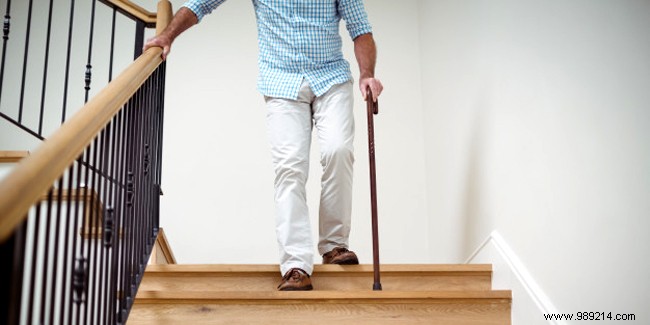
As you age, and in order to be able to continue to reside in your home, it is very often necessary to adapt your accommodation. This may involve installing equipment that facilitates its accessibility, movement within its home, or that secures the use of certain rooms in the house such as the bathroom for example. Work that can be expensive for some. In order to help elderly or disabled people wishing to improve their home and adapt it to their way of life, the public authorities are offering a helping hand to reduce these expenses through the tax credit for equipment work. for the elderly or disabled.
People who carry out equipment work in their home (completed or under construction) in order to adapt it to their loss of autonomy or their disability have the possibility of benefiting from a tax credit to help them financially, that is, a reduction in their income tax.
One of the conditions is to be domiciled in France and that the accommodation, where work is carried out to improve its accessibility and daily use, is a main dwelling. The term main residence is understood to mean that which, for tax purposes, is the place of residence on 31 December of the year of receipt of income, or, for persons who have several residences in France, that where a person lives effectively and usually. .
This tax credit is intended for taxpayers who meet one of these conditions:benefit from the personalized autonomy allowance (APA), a disability pension for an accident at work of 40% or more, a military disability pension for disability of 40% or more, or hold a mobility inclusion card.
As things currently stand, the work carried out to facilitate access to and use of housing for the elderly and/or disabled must be carried out before December 31, 2020, and by the company supplying the equipment. This tax credit concerns all work undertaken for at least five years since the 1 st January 2005.
To benefit from the tax credit for equipment work for the elderly or disabled, the expenses incurred in 2020 must be declared with the income for the same year, in April 2021.
Note:even if the tax authorities do not require you to provide supporting documents for these expenses, such as the corresponding invoices, when filing your income tax return, it is important to keep them well because they can be requested at any time. by the tax services.
The amount of the tax credit for fitting out work for the elderly or disabled is equivalent to 25% of the expenses (all taxes included and including labour) incurred to carry out this fitting out work.
Namely:the other financial aid or subsidies that may be granted for this type of work are deducted from the amount of the expenses actually incurred for the calculation of the tax credit.
However, the amount of expenses incurred to equip a house for an elderly and/or disabled person must not exceed a certain ceiling:5,000 euros for a single person and 10,000 euros for a couple subject to joint taxation. These maximum amounts are increased by 120 euros per dependent and these ceilings correspond to the sum of the expenses undertaken over five consecutive years.
The tax credit for equipment work for the elderly or disabled relates to expenses incurred in their main residence in terms of sanitary equipment, safety and accessibility.
For example, sanitary equipment such as the installation of a sink or washbasin with adjustable height, a wall-mounted shower seat, raised toilets, a thermostatic mixer, or even a shower cubicle integral for people with reduced mobility, may qualify for this tax credit.
In the same way, in terms of housing accessibility, a handrail, grab or support bars, inclined planes, height-adjustable furniture, control systems with motion detectors, signaling or warning devices, closing and opening devices or control systems for electrical, water, gas and heating installations, motorized systems for shutters, entrance and garage doors, or gates, electric roller shutters, non-slip floor coverings, etc., are all items of equipment that can make life easier for an elderly or disabled person at home and which are included in the list of expenses that can make it possible to benefit from the tax credit for equipment work for the elderly or disabled.